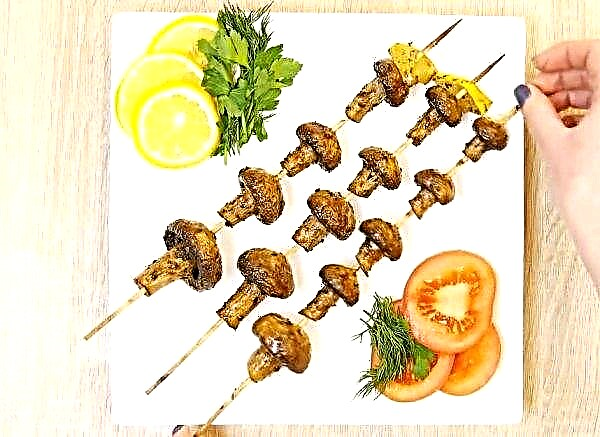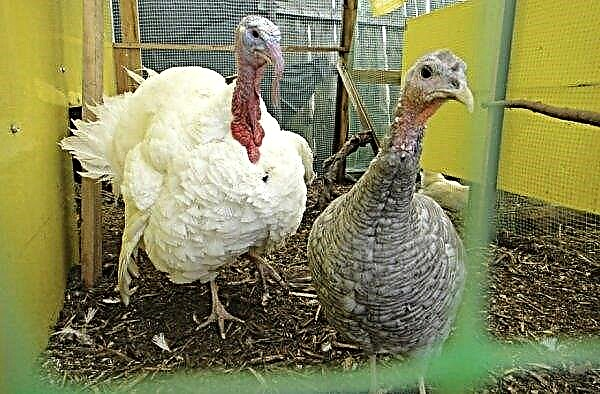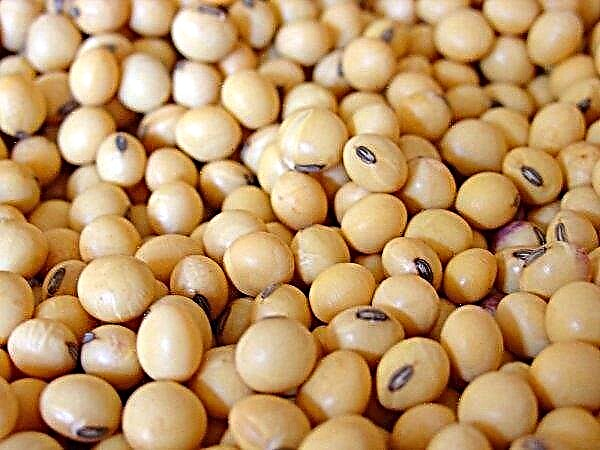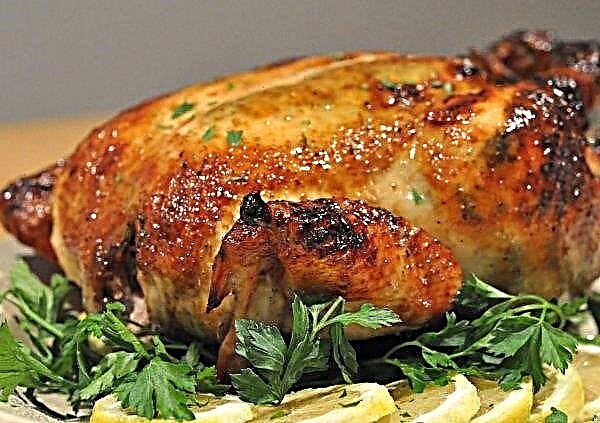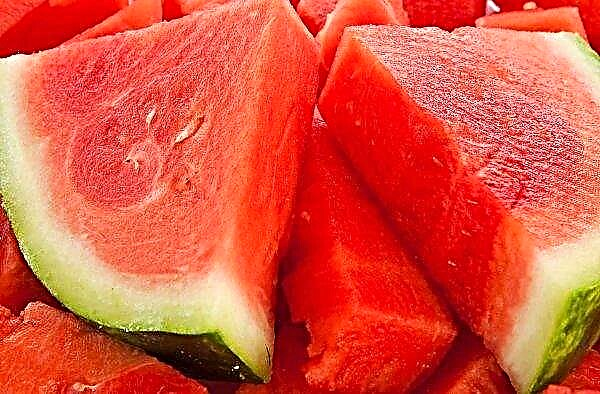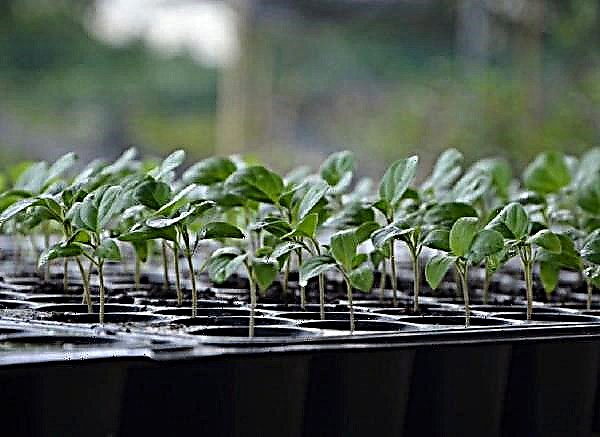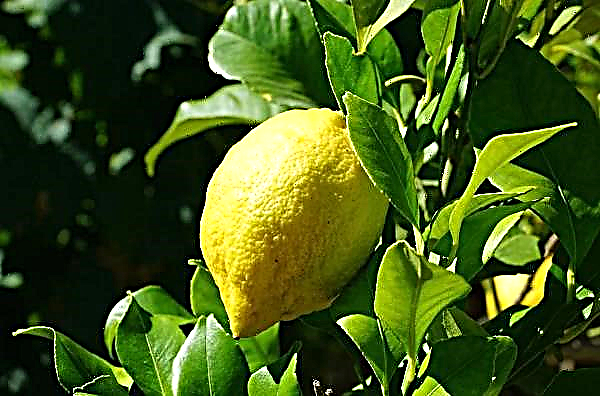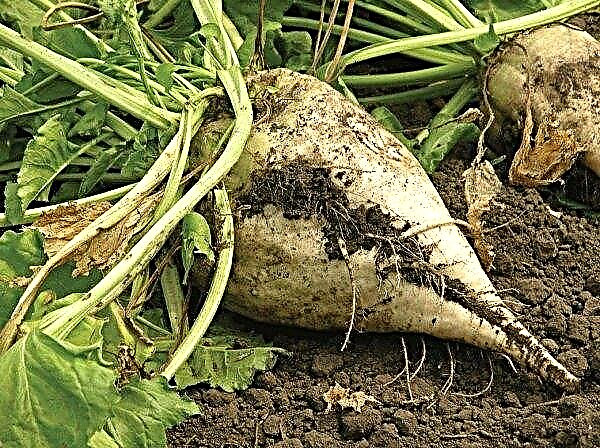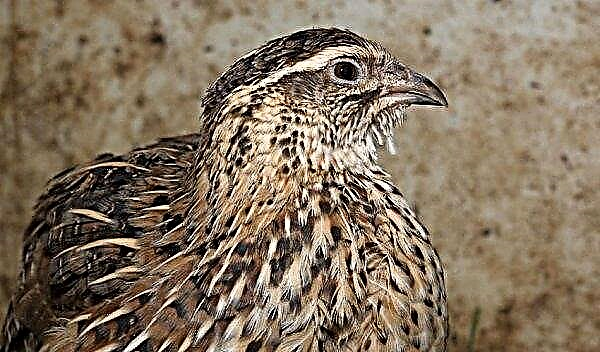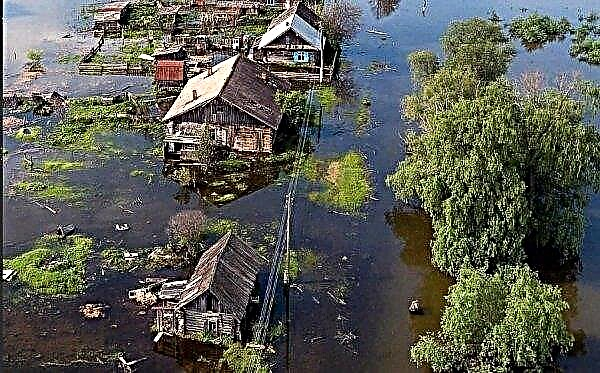Juniper is a coniferous ornamental plant used by gardeners to create spectacular compositions in summer cottages. The plant is unpretentious to the conditions of cultivation and care. It tolerates temperature extremes. But sometimes it lends itself to various negative factors that cause yellowing of the needles and its shedding. In more detail about the main causes of juniper disease and methods of treatment - further in the article.
Why does the juniper turn yellow and what should I do
There are several reasons why the juniper turns yellow.
These include:
- Wrong watering mode. It is that the soil is either too wet or too dry. It is necessary to constantly monitor the state of soil moisture. It is enough to water shrubs once a month - 10 liters of water per 1 plant. On hot days, in the absence of rain, watering should be increased to 25-30 liters of water and sprinkling weekly.
- Unsuitable soil composition and growing area. Most juniper varieties prefer neutral soil acidity. In the case of an increase or decrease in pH, the plants lose their decorative appearance, the needles turn yellow and crumble. To avoid this, you can purchase tests in specialized stores that determine the level of soil acidity and plant shrubs in suitable places.
- Lack of nutrients. The juniper responds by yellowing the needles or its falling to the lack of any useful element. So, for example, with iron deficiency, the needles turn yellow or white, with a lack of phosphorus - the needles turn red, with the presence of an abundance of nitrogen - the plant lags in development. Therefore, it is recommended to feed young plants annually in spring, and adults - once every 2-3 years, with superphosphate, rotted manure, ammonium nitrate, and complex fertilizers.
- The time of planting seedlings. The optimal period for planting shrubs in a permanent place is the second half of spring and early autumn. If you plant seedlings in the summer, they may turn yellow and dry.
- Diseases and Pests. Due to improper care of the juniper, shrubs can be exposed to diseases and insect attacks that can destroy entire plants. It is better to prevent negative consequences in advance, carrying out prevention and adhering to the rules of agricultural technology. Preventive measures should be carried out at the beginning and at the end of the season, using a solution of Bordeaux fluid (1%), drugs "Quadris", "Fitosporin", etc.
- Burns in the winter. Appear on needles on sunny frosty days. In the spring, the bushes turn yellow and dry. In such cases, gardeners recommend in regions with a cold climate to plant frost-resistant juniper varieties, to shelter young plants for the winter.

Juniper can be reanimated by first eliminating the root cause, then by performing a series of crown restoration procedures.
Important! Cyclically, every four years, in the fall, the old juniper needles turn yellow and crumble, being replaced by a new one. Such a process is the norm.
They are as follows:
- treat the needles with the Epin-Extra preparation (2 ml per 10 l of water);
- after 10 days, spray the crown and near-trunk zone with Zircon (1 ml per 10 liters of water);
- to improve the growth of roots use "Kornevin";
- shrub reprocess "Epin-Extra."

If it turns yellow inside the crown
The appearance of yellowness on the needles of juniper is provoked by the following reasons:
- insufficient lightening;
- dense landing of bushes;
- spraying the crown on a hot day;
- exposure to insect pests;
- natural withering away of old needles;
- mechanical damage to branches;
- seasonal changes in the color of needles.

It is possible to restore the former decorative appearance of a coniferous plant by eliminating the sources that cause the yellow appearance of the crown, as well as rationally adjusting the agrotechnical care.
Did you know? Rocky juniper with its roots prevents the collapse of stones and earth from the mountains where it grows.
If it turns yellow below
Yellowing of juniper in the lower part of the bush occurs due to such factors:
- domestic animals defecate on the plant;
- fungal diseases;
- polluted atmospheric environment.

In such cases, it is recommended to fence plants with nets or trellises, as well as preventive measures against diseases. Still experts advise to process needles with the Epin and Zircon preparations (5 ml of each means on 4-6 l of water).
Juniper Yellowish Disease
In addition to non-compliance with the rules for the care and cultivation of juniper, a variety of pests and diseases can cause yellowness of the crown. To prevent fungal diseases, it is recommended to buy healthy seedlings in nurseries. Any chemical agent must be used strictly adhering to the instructions attached to it.
Important! The most vulnerable juniper for fungal infections is fresh cuts that must be lubricated with garden varieties.
The most common include:
- shute - a disease having a fungal nature that occurs in thickened plantings if conifers are cultivated in the shade or in waterlogged soil. It mainly appears in the summer. A characteristic symptom for ailment is staining of needles in brown, yellow or brown colors, which dries out over time, but does not fall off the branches. In case of minor damage, the diseased branches need to be cut, the entire bush treated with such means as Rokor, Kvadris, KhOM, Bordeaux liquid, etc. In case of large-scale infection, the plants must be disposed of by burning;

- alternariosis - An infectious disease, manifested by the appearance of brown needles, eventually covered with a black coating. After a short time, the needles crumble, and the branches dry. You can fight with the help of trimming the affected areas, treatment with a solution of copper sulfate (1%) or “HOMA”;

- biorell cancer - penetrates through cracks in the crust, forming brown spots on the surface, leading to drying and cracking of the crust. Subsequently, the needles turn yellow and fall. This disease is treated with a solution of copper sulfate, the drug "HOM";

- necrosis of the cortex - Forms red spots on the cortex, which are a source of bacteria. The disease spreads to the crown, causing yellowing and drying. The most likely cause is the proximity of the bushes relative to each other. It is necessary to process the plants with Caesar, Quadrice, Skor, sodium humate, etc .;
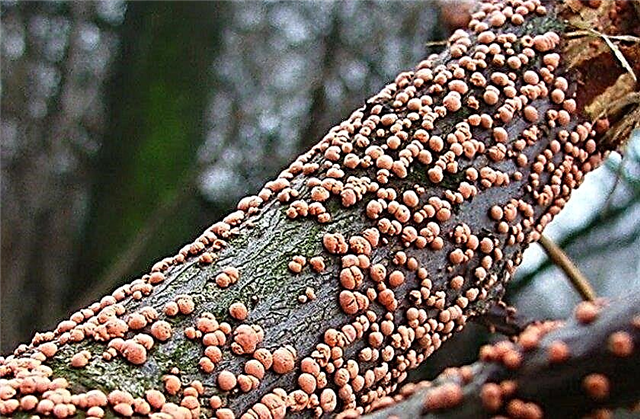
- rust - A very dangerous fungal disease spreading by the wind, infecting juniper on a large scale. It is characterized by the appearance of orange growths, falling branches, yellowness and shedding of needles. Soon the plants die. Juniper can be cured only at the initial stage of the development of the disease, as well as by prophylaxis with Vectra, Bayleton, Ridomil Gold MC drugs;
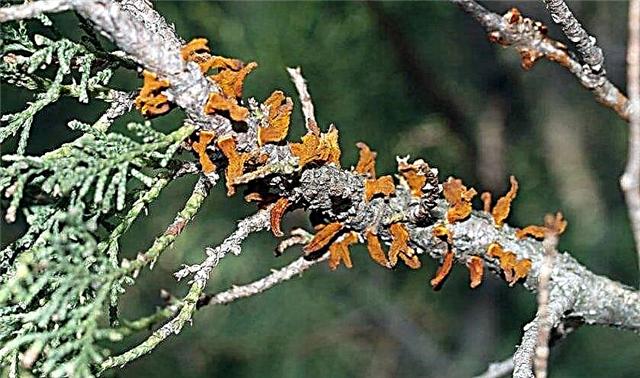
- branch drying - It is almost impossible to recognize at the very beginning and, accordingly, save the bushes. In this case, infected specimens should be dug up and burned;
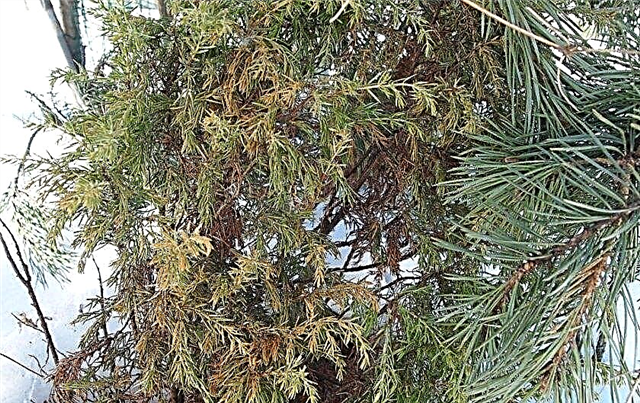
- fusarium - A disease that affects the rhizome of the coniferous representative. Due to a lack of nutrition, the tips of the branches begin to darken and dry, the process moves from the crown to the base of the trunk. This can be avoided by spraying the earth around the trunks with the chemical products “Gamair”, “Fitosporin-M”, “Fundazol”.
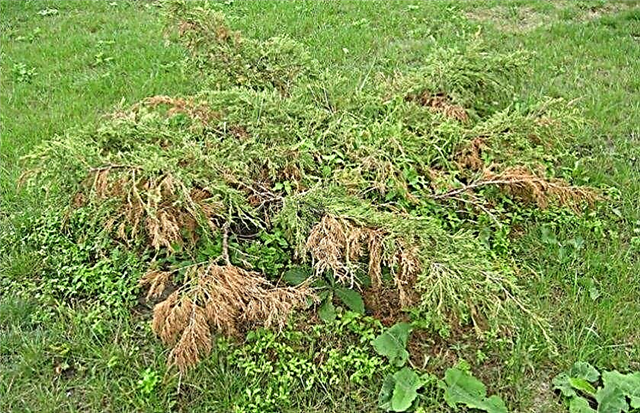
In addition to infections, insects, such as:
- juniper aphid - sucks juices from young shoots, as a result of which they are deformed, the needles turn yellow and fall off. In order to fight, it is necessary to destroy closely located anthills, spray the damaged branches with soapy water (preventing the soap from getting on the ground around the bushes), repeating the procedure after 1 week. With a large-scale defeat, the branches need to be cut and burned;

- juniper shield - an insect that appears at the beginning of summer on cones and needles. It sucks juices, preventing the annual growth of young shoots. For prevention, it is recommended to use caterpillar glue in early spring, applying it around the trunk at the level of the basal neck. You can also use straw or fabric hunting belts. In advanced cases, you need to use the drugs "Aktara", "Confidor", "Enzhio" and others;
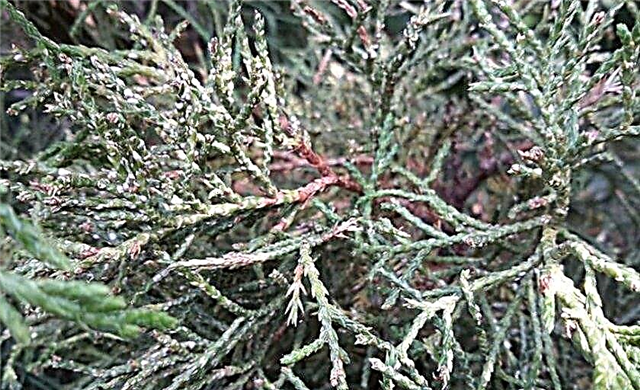
- juniper moth - Young caterpillars cause great damage, hitting the middle of the crown, gnawing holes in the needles. With a massive defeat, they can destroy almost all the needles. To avoid such an outcome, you can use the chemicals Calypso, Confidor, Angio;

- gall midges - orange caterpillars of these insects secrete a specific substance on the juniper needles, under the influence of which galls form on plants. Larvae hibernate in them. The treatment consists in spraying shrubs with the insecticides Actellik, Fufanon, pruning and destroying the diseased parts;
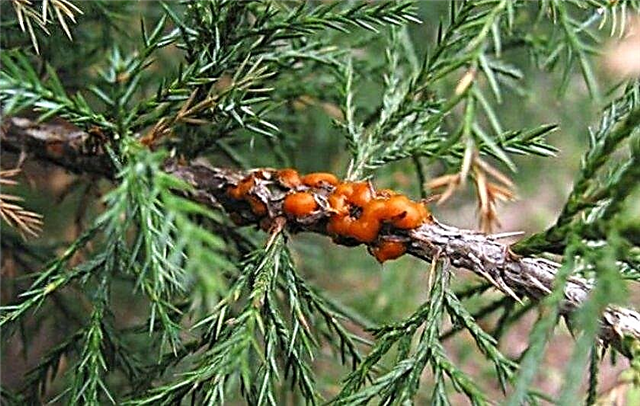
- spider spider mite - forms a thin web on the needles, as a result of which the needles darken, dry out and fall off. It is necessary to deal with this pest, providing the young plants with proper care, spraying with a solution of colloidal sulfur, extracts from dandelions or garlic.
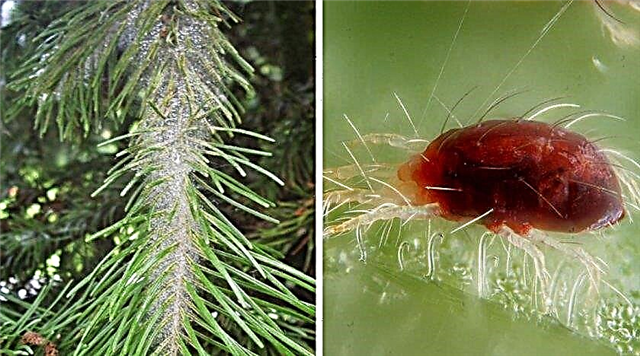
What to do if juniper bonsai turns yellow
Growing more and more popular among gardeners is growing bonsai from juniper.
Did you know? The oldest juniper is over 2000 years old, which still grows in the Crimea.
Even the fact that plants are grown in separate pots under gentle conditions, “mini conifers” can also turn yellow for the following reasons:
- Not enough moisture. Being constantly in the room (especially heated), ornamental shrubs suffer from drying out of the ground in containers. Therefore, they need to be regularly watered, avoiding overmoistening of the soil, and spraying the crown.
- Stress. Coniferous crops may turn yellow and crumble due to frequent changes in location or transplant. In this case, you need to choose the best place for a bonsai, do not move it in order to enable it to acclimatize to new conditions.
- Lack of minerals in the earth leads to yellowing and shedding of needles. Fertilizers should be regularly applied depending on the deficiency of a particular chemical element.

There are many different reasons for yellowing the juniper crown. To prevent this negative process, it is necessary to provide shrubs with proper care, regularly inspect the coniferous culture for the appearance of the first signs of yellowness and in time to prevent this.













